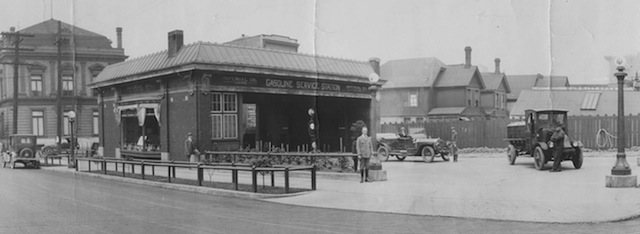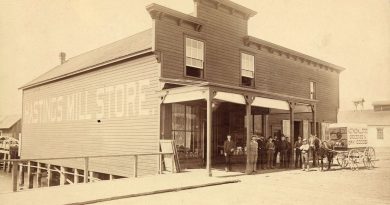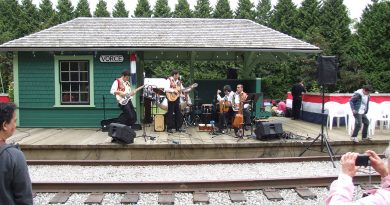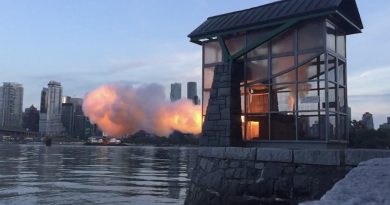Canada’s First Gas Station
There used to be a plaque at the southeast corner of Cambie and Smythe in Vancouver that marked the location of Canada’s first gas station. The plaque was installed in September of 1955 to commemorate the 75th anniversary of the Imperial Oil Company. The station opened in Vancouver, said the plaque, “in or before 1907.”
(A brief note: the first car to appear in Vancouver was a Stanley Steamer, in 1899. The first gasoline-powered car arrived in 1904.)
James S. Matthews, in his late 20s at the time the station opened, was an employee of Imperial Oil, under local manager C. M. Rolston. In a 1955 speech, Matthews, who was by then the city’s archivist, recalled the birth of that station:
“There had arrived in Vancouver a queer-looking vehicle called an automobile. We had read about them in magazines. One day, the telephone rang. The call came from the Hastings Sawmill and the speaker asked me if we had any gasoline which could be used in automobiles.
“The office boy replied that we had three kinds: One was ‘74’-brand Baume gasoline and was supplied to drug stores, who sold it to ladies for cleaning their gloves; the second kind was deodorized stove gasoline, used in plumber’s firepots for heating soldering irons, and the third kind was benzine, used for dissolving lacquer in the salmon canneries along the Fraser to prevent the salmon cans from rusting.
“The office boy went to the warehouse and told the foreman to send a four-gallon can of ’74’ down to John Hendry, manager of the mill.
“That can was the first gasoline ever sold in British Columbia for motorcar use.”
Some time later, when the number of automobiles in Vancouver had skyrocketed (Matthews: “Ultimately automobiles became more numerous and the number in Vancouver grew to seven or eight . . .”), it was decided that the method of fueling them—using pails dipped into a large wooden barrel of gasoline—was inefficient and dangerous. So a 13-gallon (59-litre) kitchen hot-water tank was procured and a length of rubber garden-hose was attached to it.
That was the equipment. Now an attendant was needed. The company’s night watchman, J. C. Rollston, had been in poor health and his cohorts believed he would improve in the sun and open air.
“We got a barroom chair,” Matthews recalled, “and my wife made a cushion.” A corrugated tin shed was built for shelter and Rollston was installed as attendant.
The “service station” was ready for business. (In the past, we’ve followed the lead of earlier writers on this subject and called it a “service station,” but since all it offered was a fill-up of gas, we think “gas station” is more accurate.)
“The fresh air and the sunshine soon banished the pallor from Mr. Rollston’s cheeks,” Matthews recalled. “and, ofttimes as I passed and waved good morning, he would call out, “I’ve been busy this morning!”
“‘How many?’ I would call, and he would answer back, ‘Three cars this morning!” Two local bicycle shops began selling gasoline, which they bought from Imperial for 20 cents a gallon and sold for 40.
Word of this new way of delivering gasoline to cars spread. “A dealer in Florida,” says Matthews, “wrote asking details.” (The Florida people had been using garden watering-cans.)
Some have claimed that Imperial’s station was the first in the world. Not by a long shot. There’s no doubt, however, that Vancouver’s first service station was also Canada’s first.




